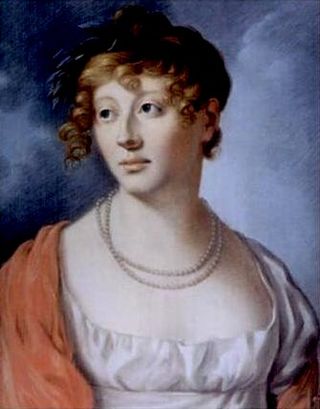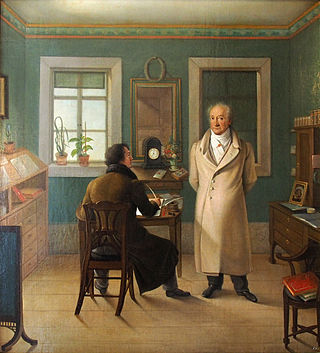Life
He was the son of Christian Joseph Jagemann, the librarian for Duchess Anna Amalia of Brunswick-Wolfenbüttel. His sister, the actress Karoline Jagemann, became the mistress of Karl August, Grand Duke of Saxe-Weimar-Eisenach, who helped him begin his artistic studies with Johann Heinrich Tischbein. He later worked with the court painter, Georg Melchior Kraus and Heinrich Friedrich Füger in Vienna.
From 1802 to 1804, he was in Paris, where he may have studied with Jacques-Louis David and Jean-Baptiste Regnault. He then returned to Weimar and became a portrait painter. He was also a professor at the Fürstlichen freien Zeichenschule. In 1805, he drew a portrait of Friedrich Schiller on his deathbed.
From 1806 to 1810, he was studying again; this time in Rome. After 1814, he and Johann Heinrich Meyer served as co-directors of the Zeichenschule. He died of unknown causes at the age of thirty-nine. Johann Wolfgang von Goethe, whom Jagemann had painted on several occasions, delivered a eulogy for him at the Weimar Masonic Lodge. He was buried at the Jacobsfriedhof.

Karl August, sometimes anglicised as Charles Augustus, was the sovereign Duke of Saxe-Weimar and of Saxe-Eisenach from 1758, Duke of Saxe-Weimar-Eisenach from its creation in 1809, and grand duke from 1815 until his death. He is noted for the intellectual brilliance of his court.

Saxe-Weimar was one of the Saxon duchies held by the Ernestine branch of the Wettin dynasty in present-day Thuringia. The chief town and capital was Weimar. The Weimar branch was the most genealogically senior extant branch of the House of Wettin.

Charles Frederick was the reigning Grand Duke of Saxe-Weimar-Eisenach.

Johann Gustav Stickel was a German theologian, orientalist and numismatist at Jena University.

Charles Alexander was the ruler of Saxe-Weimar-Eisenach as its grand duke from 1853 until his death.

Baroness Karoline Jagemann von Heygendorff was a major German tragedienne and singer. Her great roles included Elizabeth in Mary Stuart (1800) and Beatrice in The Bride of Messina (1803). She is also notable as a mistress of Karl August, Grand Duke of Saxe-Weimar-Eisenach, the father of her three children. Both she and Karl August had their portraits painted by Heinrich Christoph Kolbe.

Georg Melchior Kraus was a German painter. He was a co-founder of the Weimar Princely Free Drawing School, together with Friedrich Justin Bertuch, in 1776.

Heinrich Christoph Kolbe was a German painter. He is associated with the Düsseldorf school of painting.

The Weimar Princely Free Drawing School was an art and literature educational establishment. It was set up in 1776 in Weimar by the scholar and ducal private-secretary Friedrich Justin Bertuch (1747–1822) and the painter Georg Melchior Kraus (1737–1806), as part of Weimar Classicism. It was financed by the young Charles Augustus, Grand Duke of Saxe-Weimar-Eisenach and heavily promoted by Goethe, who also taught there. Among its pupils were Charles Augustus's future mistress Karoline Jagemann. It lasted until 1930.

Friedrich Johann Justin Bertuch was a German publisher and patron of the arts. He co-founded the Weimar Princely Free Drawing School with the painter Georg Melchior Kraus in 1776. He was the father of the writer and journalist Karl Bertuch.

Louise Seidler was a German painter at the court of the grand dukes of Weimar, custodian of their art collection and a trusted friend of the poet Goethe and the painter Georg Friedrich Kersting.
Events in the year 1874 in Germany.

Prince Frederick Ferdinand Constantin of Saxe-Weimar-Eisenach was a titular Duke of Saxe-Weimar-Eisenach and a major general in the army of the Electorate of Saxony. He lived during the Age of Enlightenment.

The Wilhelm-Ernst-Gymnasium is a secondary school on Herderplatz 14 in Weimar, Germany. Founded in 1712 by Duke William Ernest of Saxe-Weimar, it is the oldest school building in the city. Numerous notable figures such as Johann Gottfried Herder, Johann Heinrich Voss, Friedrich Wilhelm Riemer and Johann Karl August Musäus studied here. It is a designated historic site and is one of the few secular buildings of the pre-classical period still remaining in Weimar. It is prominently located in the urban center and is one of three sites forming the UNESCO World Heritage Site Classical Weimar, created in 1998.

The House Order of the Wendish Crown is a dynastic order that was jointly instituted on 12 May 1864 by Grand Duke Friedrich Franz II of Mecklenburg-Schwerin and Grand Duke Friedrich Wilhelm of Mecklenburg-Strelitz. It is the oldest and most senior order of the House of Mecklenburg.

Johann Ernst Heinsius was a German portrait painter and miniaturist.

Franz Kirms was the official comrade of Johann Wolfgang von Goethe in the management of the Weimar Theatre and as a flower lover. He was born in the Holy Roman Empire.
Christian Johann Christoph Schreiber was a German theologian, philologist, philosopher, and poet. He was also the Superintendent of the dioceses of Lengsfeld and Dermbach. He was connected in friendship or correspondence to writers and philosophers of his time, and published poetry, sermons, historical and philosophical works.

Johann Joseph Schmeller was a German painter who was closely associated with Johann Wolfgang von Goethe.
Events from the year 1829 in Germany
This page is based on this
Wikipedia article Text is available under the
CC BY-SA 4.0 license; additional terms may apply.
Images, videos and audio are available under their respective licenses.





















